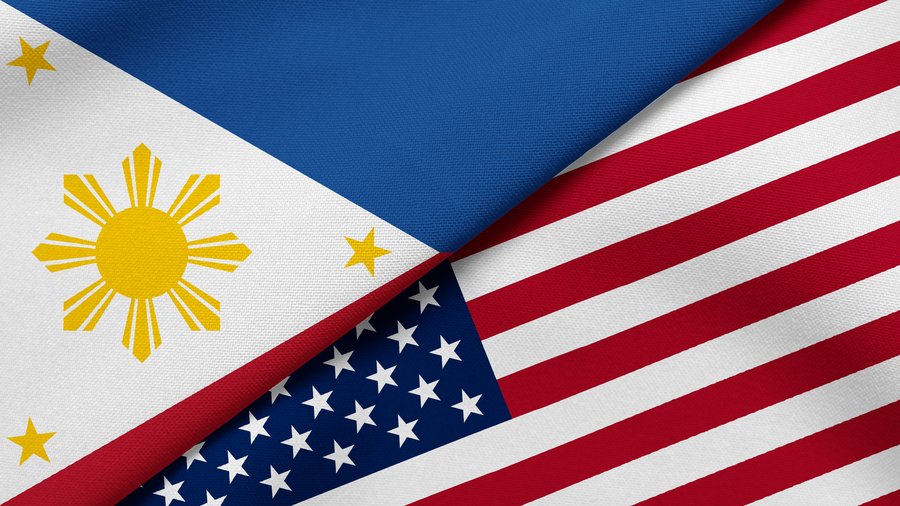Salzburg Global Fellow Diana Villanueva-Romero examines the Philippines as a case study for America’s demonstration of political and cultural power in the Asia-Pacific region
This article was written by Salzburg Global Fellow Diana Villanueva-Romero, who attended the Salzburg Global American Studies program on “Crossing the Pacific: The Asian American Experience in U.S. Society and Discourse” in September 2024.
As a scholar interested in reclaiming the legacy of Philippine culture in Spanish to make it available to Filipinos, Americans, and Spanish-speaking people, I want to reflect on how the historical experience of Filipinos informs Asia-America relations today.
The Philippines was a unique historical experiment in American history: A country that was once a colony itself colonized abroad for the first time. Within the diversity of Asia, Filipinos, as former U.S. nationals, stand out for sharing a common past with Americans. What are the main takeaways derived from such a special connection?
In the Philippines, the U.S. redefined colonialism, the political system from which the thirteen American colonies had liberated themselves. The purchase of the Philippines from the Spanish Empire came with the promise of freeing the Filipinos from foreign intervention. However, William McKinley’s policy of “benevolent assimilation” developed into the military occupation and later cultural colonization of the archipelago. It also created a new image for America.
With the acquisition of the Philippines and the annexation of Hawai’i in 1898, the U.S. took its manifest destiny across the Pacific and became a major player in an area whose geopolitical importance remains evident today. But didn’t this experiment in westward expansion bring into question the very essence of America as a beacon of democracy? How does the U.S. presence in the Asia-Pacific area, from the Philippines occupation to the Vietnam War to its support for Taiwan, craft Asia-America relations? In sum, what lessons can be learned from the contradictions of the past and the challenges of the present?
Ideologically, under the U.S., the Philippines constituted an experiment in nation-making. Their independence was repeatedly put on hold by America on account of the Filipinos’ lack of preparation in the mechanisms of democracy. However, the Filipinos outdid themselves by repeatedly sending pro-independence commissioners to the U.S. between 1919 and 1934 in a bold move that questioned the foundations of American democracy.
That is how, against the backdrop of international unrest due to World War I and rising communism both in Europe and Asia, the U.S. felt the weight of international leadership for the first time. To what extent did its responsibility to facilitate the creation of an independent Philippine nation lead the U.S. to define itself against previous European empires as well as regional powers in Asia like Japan and China? Was such western interference on Filipino soil a motivation for forging an even stronger Pan-Asian movement? How does the Philippines’ past as an American colony affect its relationship with China?
From a social point of view, the Philippines and the U.S. both have demographic diversity. One of the largest groups of immigrants in the Philippines comes from China. Historically, bouts of Sinophilia and Sinophobia have alternated in the Philippines as well as in the U.S. A prevalent stereotype in Filipino literature is that of the Chinese moneylender and rip-off merchant. At the same time, Hispanophone Filipino writers used to associate Americans with the perils of modernity: consumerism, disregard for traditions, and fast-paced life. Many Americans today see the Filipino diaspora as formed mainly by health workers or industrious and peaceful people. How do these stereotypes shape the image of Asian-Americans? Can they disrupt intercultural understanding?
From a cultural standpoint, Spanish language in the Philippines died with American occupation. If Filipinos today were asked to read any of the political essays published in the first half of the twentieth century in the Philippine press in Spanish, they would probably be unable to do so. In fact, the seizing of the archipelago by the U.S. deprived this and other generations of the opportunity to learn how the Hispanophone leaders of the country helped redesign their nation.
Today, Spanish is the second most-spoken language in the U.S. It connects the large Hispanic community, mostly characterized by Catholic values coming from its ties with Spain, with Filipinos, one of the largest Asian-American groups. Could we then define this Asian group as an entry point into the similarly vital relationship between the U.S. and Latin America?
The Philippines is a useful case study for examining America’s demonstration of political and cultural power in the Asia-Pacific region for more than a century. It can be read as a metaphor of America’s transition from regional to global influence and the higher international responsibility that came with it. In the current state of global politics, U.S. supremacy is questioned by rising actors, with China exerting its influence in Asia and beyond. At this crossroad, Asian-Americans become an asset for the U.S. to play this power game.
Diana Villanueva-Romero is an associate professor at the English Department of the University of Extremadura, Spain. She is a member of GIECO, Research Group in Ecocriticism of the Franklin Institute, University of Alcalá, Spain. She is also part of CILEM, Research Group in Languages and Cultures in Modern Europe: Discourse and Identity and of the Institute for Linguistics and Applied Languages (LINGLAP) of the University of Extremadura.
Explore our digital publication, which includes more coverage from the Salzburg Global American Studies program on “Crossing the Pacific: The Asian American Experience in U.S. Society and Discourse.”


